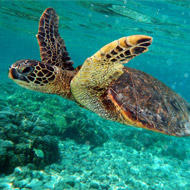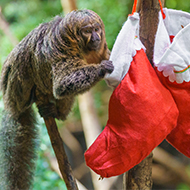Scientists have successfully reconstructed the skin of endangered green turtles to grow a virus called chelonid herpesvirus 5.
Scientists engineer turtle skin to grow tumour-associated virus
Scientists are a step closer to fighting viral diseases that threaten endangered animals and humans, thanks to a new study led by US Geological Survey.
In a collaborative project, scientists reconstructed the skin of endangered green turtles, marking the first time this has ever been achieved in a non-mammal. In turn, this helped them to grow a tumour-associated virus to better understand certain human diseases.
In the study, scientists successfully reconstructed the skin of endangered green turtles to grow a virus called chelonid herpesvirus 5 (ChHV5). ChHV5 is linked to fibropapillomatosis (FP), a devastating tumour disease that can harm turtles’ immune systems, leading to secondary infections, emaciation and death.
“Fibropapillomatosis is the most common infectious disease affecting endangered green turtles,” explained Thierry Work, a USGS scientist and the lead author of the study. “Our findings provide a significant advancement in studying FP, and may eventually help scientists better understand other herpes virus-induced tumour diseases, including those of humans.”
Writing in the Journal of Virology, researchers describe how they used cells from tumours and normal skin from turtles to reconstruct the complex structure of turtle skin. Growing the virus gave scientists the opportunity to observe the virus replication in unprecedented detail.
While the existence of ChHV5 has been known for more than 20 years, the inability to grow the virus in the laboratory has hampered efforts to understand ChHV5.
“Examining viruses within the complex three-dimensional structure of engineered skin is exciting, because virus replication in such a system is likely much closer to reality than traditional laboratory techniques,” Work said. “This method could be a powerful tool for answering broader questions about virus-induced tumours in reptiles and herpes virus replication in general.”
The USGS study involved researchers from the University of Hawaii, the National Oceanic and Atmospheric Administration and the University of Zurich.
Image (C) Brocken Inaglory








